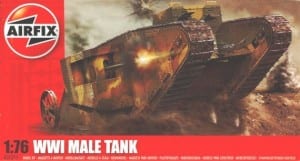When examining the model of the mark I tank, the main feature that people can relate to is the caterpillar tracks. Caterpillar tracks were first invented for agriculture use from ploughing the land instead of using of horses. The tracks themselves would plough the earth crushing the earth engraving there marks across the land. The tracks were put on the new war machine to help them cross the trenches built by the enemy during the war.
When it came to replicating a model/ image of the tank, our groups idea was first to find an air fix model that we could use it during the performance, our research and feelings about that the first tank spread around while we were building it gluing the parts together by one following the blueprints that were inside the box. When it came to creating something in the space inside the weighing room at the Grandstand we tried to recreate what we had made during our afternoon session at the village hall, a tank built from chairs. When in the weighing room we decided to turn one chair on top of the other and when look at what we had created the chair legs looked like the Caterpillar tracks that ploughed across the ground. The movement of the tracks when first used were slow and would turf the ground up. Our tanks tracks when moving them along would hit the ground creating a rhythm with the sound creating the motion of a convey belt repeating the action over and over moving along the room from one side to another.
Now that we had the movement for our tank sorted, we decided to apply some text to our actions. The first piece of text we practised with was the Tanks regiments meaning which we had found at the Museum of Lincolnshire Life.
BROWN from the Mud
RED through the Blood
GREEN to the Green Fields Beyond
Firstly we would have someone shout out the colour then the group would say what the meaning of that colour was then moving the chairs to their next position repeating the text and the movement until we reached the other side of the room. While doing this process it did make me think, could we have the audience on the inside of the tank and transport them from one side of the room to another shouting out or even whispering our text to them? While working on our movement and looking at the space in between our tracks I kept thinking could we make our audience part of the machine, the inside of the cabin, have them experience what it would have been like on the inside the Tank.
The noise of the engine rumbling behind them, the smell of cordite fumes lingering in the air and the feel the overwhelming heat from the engine. There would have been no escape from what the crew experienced being inside this Killing Machine.
